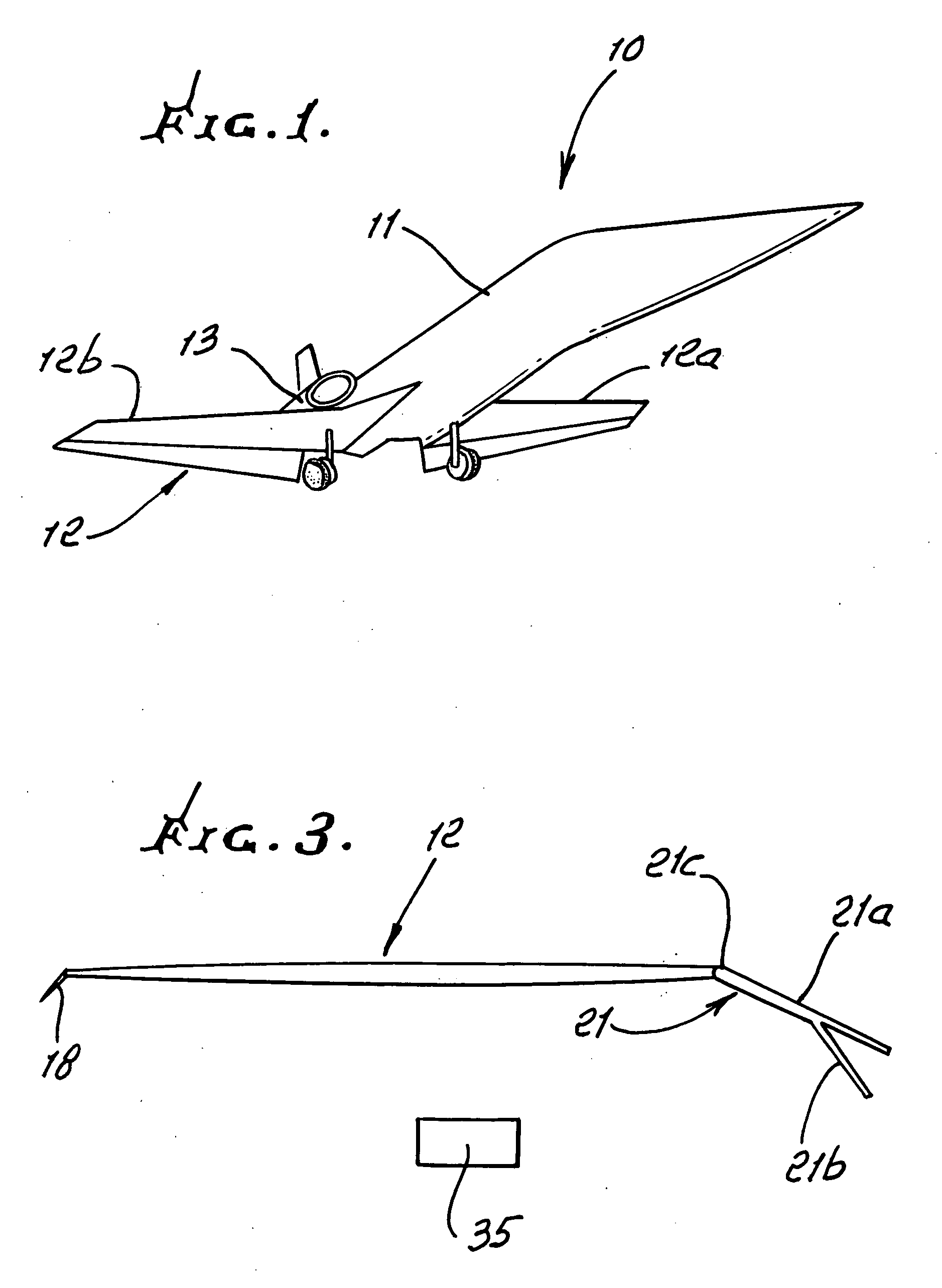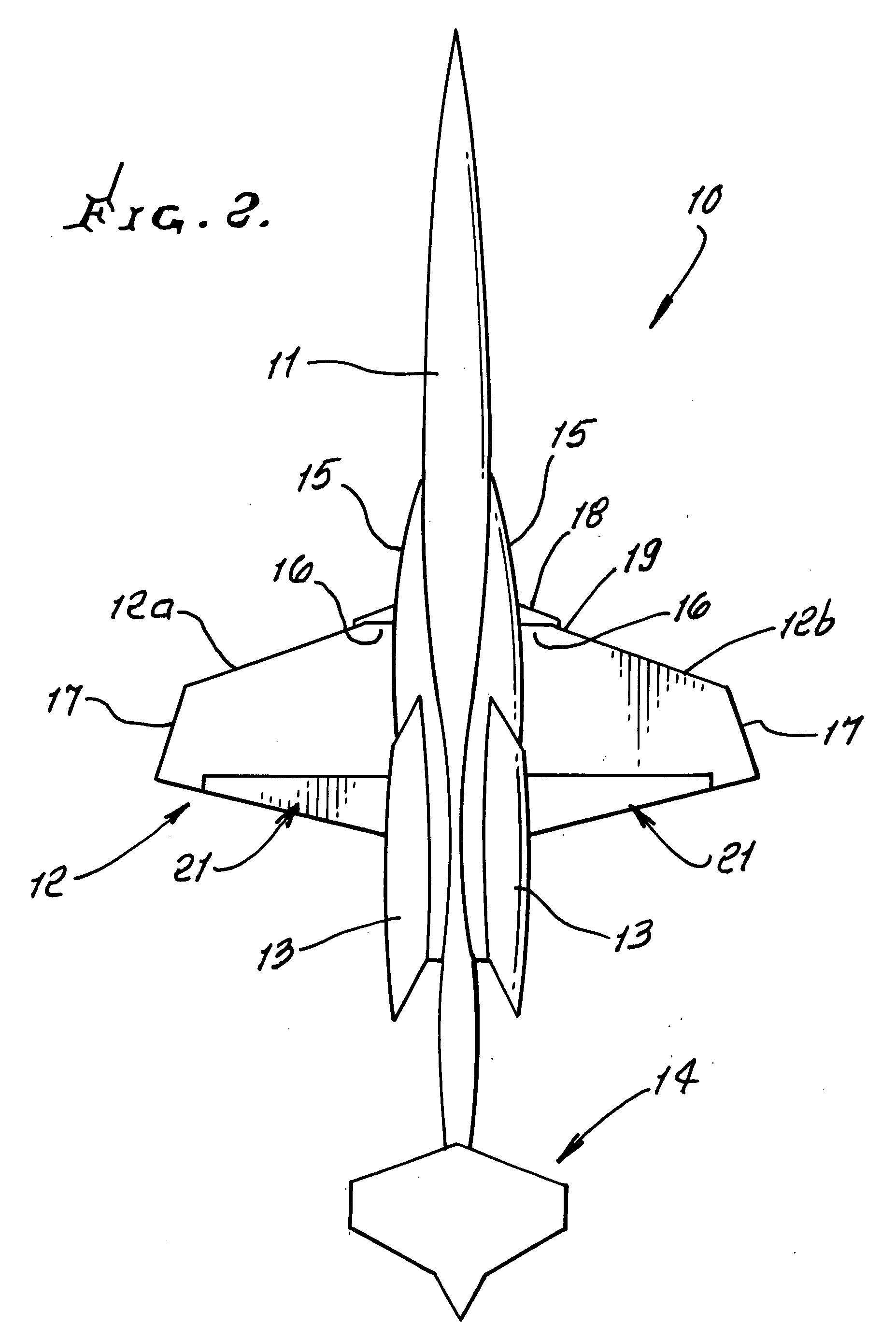Highly efficient supersonic laminar flow wing
a supersonic and laminar flow technology, applied in the direction of airflow influencers, wing shapes, transportation and packaging, etc., can solve the problems of limiting the effectiveness of “area ruling” the wing body for minimizing supersonic wave drag, structural weight penalty, etc., to achieve a substantially reduced transition to turbulence, a higher skin friction drag, and a chord-wise pressure gradient.
- Summary
- Abstract
- Description
- Claims
- Application Information
AI Technical Summary
Benefits of technology
Problems solved by technology
Method used
Image
Examples
Embodiment Construction
[0025]In the drawings, the preferred supersonic aircraft 10 has a fuselage 11, thin, laminar flow wing 12 including left and right wing sections 12a and 12b, jet engines 13 closely proximate opposite sides of the fuselage, and tail 14.
[0026]The strake is shown at 15, as a highly swept portion of the wing between the fuselage 11 and the inboard end 16 of the low sweep main wing panel. Other strake characteristics are referred to above.
[0027]The raked tip of each wing section is shown at 17, and has characteristics as referred to above.
[0028]Reversed fillet configuration, for each strake-fuselage junction leading edge, is indicated at 19, and has characteristics as referred to above.
[0029]The inboard leading edge flap is shown, for each wing section, at 18, and has characteristics as referred to above, and may have association with cavities in the fuselage or strake.
[0030]Hybrid plain-split flap, for each wing section, is provided at 21, and has characteristics as referred to above, a...
PUM
 Login to View More
Login to View More Abstract
Description
Claims
Application Information
 Login to View More
Login to View More - R&D
- Intellectual Property
- Life Sciences
- Materials
- Tech Scout
- Unparalleled Data Quality
- Higher Quality Content
- 60% Fewer Hallucinations
Browse by: Latest US Patents, China's latest patents, Technical Efficacy Thesaurus, Application Domain, Technology Topic, Popular Technical Reports.
© 2025 PatSnap. All rights reserved.Legal|Privacy policy|Modern Slavery Act Transparency Statement|Sitemap|About US| Contact US: help@patsnap.com



